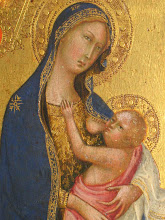Human Reproduction
My college age sister was stunned the other day looking through our kids’ How the Human Body Works book. She wasn’t expecting a chapter about genitalia and human reproduction.
We got it for Jacob when he was three. He loved the diagrams. The circulatory system, digestive track, respiration, nerves, muscles and especially the section about biomechanic parts like pacemakers and prosthetic limbs.
The human reproduction part is at the back of the book. We generally glossed over the mechanics and skipped straight to the stages of fetal development. The information was there, and we read through it, but not every time. After all, the immune system was much more compelling.
Almost three years ago, when Jacob was six and Claire four, we announced that they would be getting a new sibling.
They wanted to know how the baby got to be there. So we whipped out the Human Body book. We talked about ovulation, eggs traveling through fallopian tubes, meeting a sperm to form a blastocyst that develops into a zygote and implants on the uterine lining and continues to develop into an embryo and later a fetus. Then they wanted to know how the baby would get out. So we talked about the cervix, vaginal birth and c-sections.
So then Jacob asked the most pertinent question. “But how does the sperm get in there?’
“The father gives it to the mother.”
“Does it have to go in the same way the baby comes out?”
“Yes.”
“How does that work?”
I looked at him. “Do you really want to know? I can tell you now, or if you don’t want to know right now, I will be happy to tell you later.”
Jacob thought about it. We’d already been talking and looking at pictures for the better part of an hour.
“I don’t think I need to know right now.”
And so we moved on.
In church a few weeks ago, the first counselor was teaching the children about the roles of mothers and fathers as defined by the Proclamation to the World: The Family. The whole conversation made me slightly uncomfortable. I cringed internally as the children made lists of gender defined responsibilities and characteristics. But I recognized that my misgivings were my own personal hang-ups, and there was no reason to interject my qualms into a perfectly fine sharing time lesson.
They were running out of things to list when one kid said, “Mothers give birth.”
“Yes,” the counselor acknowledged, “mothers do give birth to the babies.”
“Yeah,” Jacob interjected. “But fathers give sperm!”
Sitting in the back of the room, I smiled and felt better.
***********************************************************************************
Coda: Evolution
Last week in church, that same counselor was teaching about families again, and how Adam and Eve were our first parents. Claire's hand flew up into the air.
"I'm just wondering how the story in Genesis matches up with the scientific evidence. I mean, were they monkeys or something like that?"
In the back of the room, I hid my face, muffling laughter.
"No, they were humans," she answered firmly, and then moved the discussion on.
Maybe we shouldn't watch Nova documentaries on Saturday night anymore.
Claiming Incarnation
11 hours ago
